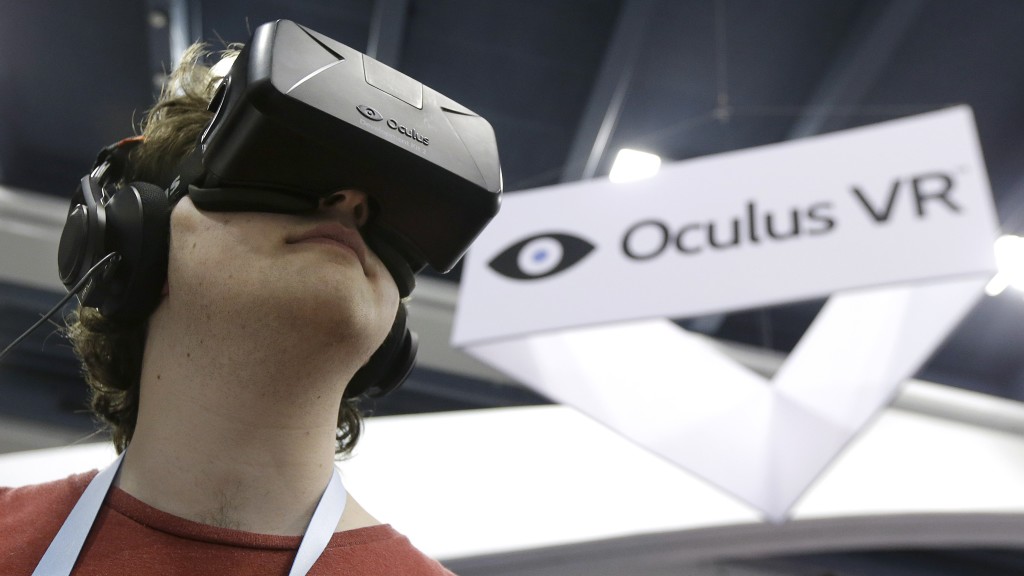Virtual reality headsets like the PlayStation VR, Oculus Rift and HTC Vive will become commercially available in 2016, which made 2015 critical for paving the way using creative promotions to give consumers a taste of what’s to come. Here are just a few examples of how much its momentum shifted over these past few months:
The Expansion of Apps
Even though their consumer market hasn’t opened entirely yet, virtual reality headsets are already seeing a number of appealing apps that make the most of the medium. For instance, Disney has introduced a Google Cardboard VR experience called Jakku Spy into its Star Wars app, which tells a story that ties in with The Force Awakens.
In addition, The North Face has recreated some extreme sports activities, like rock climbing and visiting exotic locales, thanks to the help of a partnership with Jaunt; Square Enix has created a unique Wingsuit Experience that ties in with its action/adventure game Just Cause 3; and other immersive experiences are in the works, ranging from Everest VR to a theme park that revolves around a World’s Fair style of exhibit.
Enhancing the Virtual Experience
No company took better advantage the “travel” theme of VR than the Marriott hotel chain when it introduced virtual reality-based headsets into hotel rooms, enabling guests to visit exotic locations from the convenience of their room. This is a huge step up from what it had worked on the previous year with its immersive 4D travel experience.
Those who wanted to upgrade their home could do so using VR apps. Netflix partnered with the Samsung Gear VR to give users a unique living room experience, complete with an extra large television screen, to watch streaming TV and movies. It’s not the only one, either, as other companies, like Lionsgate, Twitch and Hulu also got into the program with their own introductions. Expect these programs to gain popularity over the course of 2016, with new features being added to immerse even more users.
Gaming Goes a Long Way
Video games embraced virtual reality in a big way in 2015, mainly through public demonstrations at events like PlayStation Experience and the Electronic Entertainment Expo. Nevertheless, the introduction of immersive game experiences certainly has a few fans excited.
Oculus led the charge with the debut of several new original titles for its forthcoming headset, including the space shooter EVE: Valkyrie and the suspenseful adventure Edge of Nowhere, being developed by Insomniac Games. It even introduced a new controller that enabled players to get more involved with their experiences.
PlayStation VR also saw a boost, not only with various demonstrations at events like Game Developers Conference and other events, but also various partners coming on board. During this month’s PlayStation Experience, a variety of new titles were introduced, including Rez Infinite (seen below) and Ace Combat 7. Although the demonstrations were very well received, Sony has not officially announced a price or release date yet, other than sometime in spring 2016.
Even Microsoft, which is developing its own HoloLens augmented reality headset, pitched in on virtual reality by partnering with Oculus to introduce a “living room experience” with the Oculus Rift. Players could stream games from an Xbox One to an Oculus Rift headset, which puts them inside a virtual movie theater with a gigantic screen.
Minecraft, the best-selling hit from Mojang, will also be making its way to headsets in 2016. That’s certainly enough news to get fans excited.
Last but certainly not least, Epic Games produced a mini-series titled Sense of Presence that explained the excitement revolving around development for virtual reality headsets, as well as what the technology can do for video games in general. Check out the sample episode below.
VR Goes To the Movies
Finally, the pairing of virtual reality and movies goes a little more hand-in-hand than you might expect, as last year’s San Diego Comic-Con saw promotions revolving around Pacific Rim, X-Men: Days of Future Past and Into the Storm that utilized Oculus technology.
This year was no exception, as a pair of major studio releases tied in with VR for different promotions. Paramount teamed with HTC Vive to recreate a spooky experience for Paranormal Activity: The Ghost Dimension, where viewers could interact with the environment before going to see the film. That experience will make its way to headsets in early 2016.
The blockbuster sequel The Hunger Games: Mockingjay Part 2 also saw a great VR-based tie-in, with Samsung debuting a Virtual Reality Experience in New York where fans could work their way into Katniss’ troubled world. Lasting six minutes total, the demo went a long way to introduce fans to a whole new side of the cinematic world that they’ve only seen on the big-screen.
Lionsgate is also working with Starbreeze to create a John Wick VR game to pave the way for the upcoming movie sequel. These promotions, and many more like them, will continue well into 2016, as movie studios work alongside developers and major headset manufacturers to bring virtual worlds to life.
Although virtual reality has yet to hit the consumer market, there are those who believe that it will hit its stride in no time, making as much as $6.7 billion within the next twelve months alone. Considering all the innovations we’ve seen in preparation, that number might not be too far-fetched.

